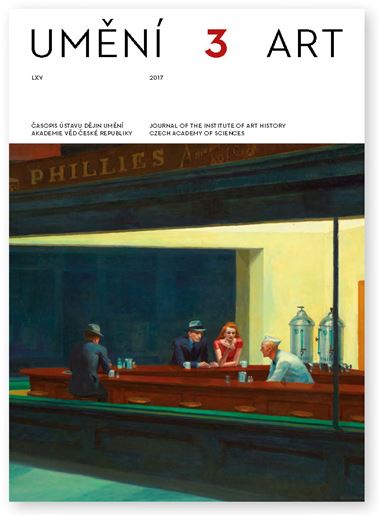Jana Zapletalová
Saly terreny zámku v Kroměříži a návrhy soch pro Podzámeckou zahradu
The interior decorations in the sala terrena rooms in Kroměříž Castle were created over a short period based on concept by Martin Antonín Lublinský (1636–1690) and they are without question one of the most important works of artistic heritage from the late 17th century in Moravia. The decorative work was done by top artists from the Lombardy-Ticino lake region and Lublinský was given this project by Olomouc Bishop Karl II von Liechtenstein-Castelcorn (1624–1695). This article presents several new findings on this work. It proposes a new dating of the frescoes in the three main halls that were painted by Paolo Pagani (1655–1716), which until now were believed to be the first work Pagani did in Moravia, but were evidently created shortly before the bishop’s death in 1695. The major part of the article focuses on the discovery of reproductions of hitherto unknown drawings and writings by Martin Antonín Lublinský in the collection of the archivist Alois Richter (1884–1958). As well as a valuable plan of the western hall indicating the location of the frescoes and of marble busts by Tommaso Rues (1636–1703) and individual life-size sculptures carved by an unknown artist, this collection of archive papers includes a description of the sculptural decorations of the western hall. The collection also includes previsously unknown drawings of Ceres and Pan for Sala Terrena and another seven drawings in which nineteen figures for the decorations for the Castle garden are depicted. The themes chosen for the central section of the garden parterre were that of a member of the Marcomanni tribe killing one of the Quadi and eight personifications of major Moravian rivers. There were also designs for creating personifications of the senses and various human attributes. Owing to a lack of sources it is also impossible to confirm whether the sculptures in these newly discovered designs by Lublinský were ever created or whether they remained alternative options for the decorations submitted to the client, but which today also provide evidence of the rich imaginative work of the artist.
Full-text in the Digital Library of the Czech Academy of Sciences:
https://kramerius.lib.cas.cz/uuid/uuid:650cde3d-4de7-4807-81b1-65bbdd06e9fa
< back

